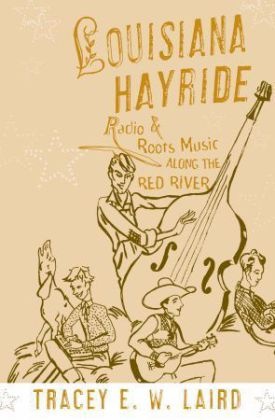Read more
Zusatztext a solid piece of work. It is punctuated with rare photographs Tracey E. W. Laird earned her Ph.D. from the University of Michigan and currently serves as Assistant Professor of Music at Agnes Scott College in Decatur, Georgia. She is a native of the Hayride's hometown of Shreveport, LA. Klappentext On a Saturday night in 1948! Hank Williams stepped onto the stage of the Louisiana Hayride and sang "Lovesick Blues." Up to that point! Williams's yodeling style had been pigeon-holed as hillbilly music! cutting him off from the mainstream of popular music. Taking a chance on this untriedartist! the Hayride--a radio "barn dance" or country music variety show like the Grand Ole Opry--not only launched Williams's career! but went on to launch the careers of well-known performers such as Jim Reeves! Webb Pierce! Kitty Wells! Johnny Cash! and Slim Whitman. Broadcast from Shreveport! Louisiana! the local station KWKH's 50!000-watt signal reached listeners in over 28 states and lured them to packed performances of the Hayride's road show. By tracing the dynamic history of the Hayride and its sponsoring station! ethnomusicologist Tracey Laird reveals thecritical role that this part of northwestern Louisiana played in the development of both country music and rock and roll. Delving into the past of this Red River city! she probes the vibrant historical! cultural! and social backdrop for its dynamic musical scene. Sitting between the Old South andthe West! this one-time frontier town provided an ideal setting for the cross-fertilization of musical styles. The scene was shaped by the region's easy mobility! the presence of a legal "red-light" district from 1903-17! and musical interchanges between blacks and whites! who lived in closeproximity and in nearly equal numbers. The region nurtured such varied talents as Huddie Ledbetter! the "king of the twelve-string guitar!" and Jimmie Davis! the two term "singing governor" of Louisiana who penned "You Are My Sunshine."Against the backdrop of the colorful history of Shreveport! the unique contribution of this radio barn dance is revealed. Radio shaped musical tastes! and the Hayride's frontier-spirit producers took risks with artists whose reputations may have been shaky or whose styles did not Zusammenfassung This book is an examination of northwest Louisiana's unique musical milieu, home to the Louisiana Hayride, a groundbreaking radio barn dance between 1948 and 1960. The region's history, geography, race relations, media, and other forces set the stage for the Hayride's critical role in both country music and rock-and-roll....

